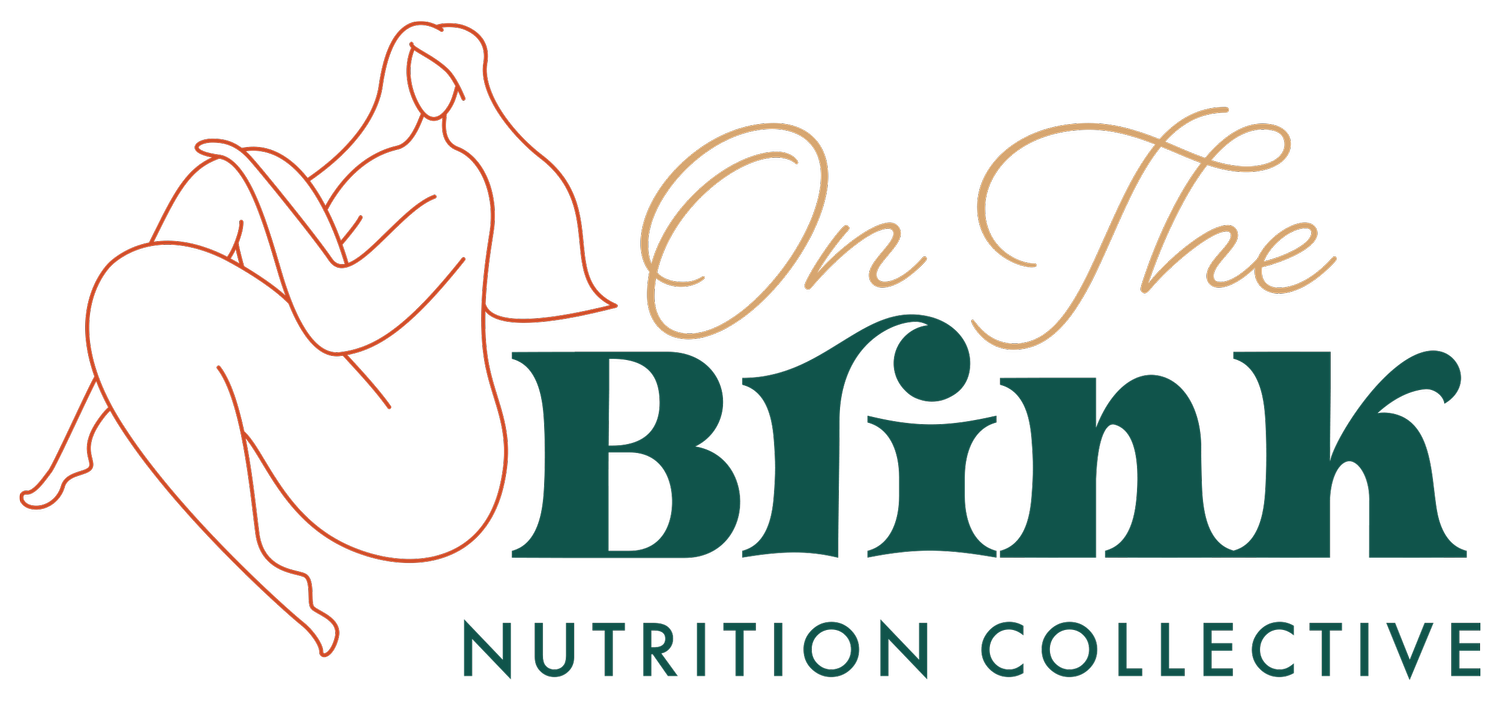How Do I Know If I Can Eat A Cookie?
For anyone who is working to make peace with food by saying no to restrictive eating patterns (also known as diets or lifestyle plans) and yes to variety and adequacy, I’m here for you.
One of the most challenging parts of moving away from dieting is the feeling that you are being asked to navigate meal times without a safety net. This is particularly harrowing if you have been operating from a dieting mindset since a young age.
First, I want to be clear: if you were made to go on a weight-suppression diet as a child because a doctor, parent, or other adult with authority saw your body as a problem, I’m so sorry and that is not ok.
Your body was never a problem to be solved.
Second, if you went along with dieting as a child and into adulthood, I want to point out the power of cultural conditioning towards anti-fatness. From the medical field, to the fashion industry, to family systems, anti-fatness is pervasive and insidious - the culprit of so much harm and suffering. So, it made sense that, as a young person, for you to go along with turning against your body and food because the alternative was telling your parents, the doctor, and the world “no thanks!” and that was not a viable option.
If you were made to go on a diet in elementary school, you have relied on an external set of rules to guide your food choices and measured your worth based on the number on the scale for a significant period of time (decades, perhaps).
Since the brilliantly designed human mind can only process so much information at any given moment, our brains build neural pathways to make repetitive thoughts and behaviors automatic. Great for when you are learning to walk, write, and drive, but terrible for when you are being conditioned to relate to food and your body as the enemy. Therefore, if you started the behavior of dieting from an early age, it may feel natural (and necessary) to restrict certain “bad” foods, limit total calories, or completely avoid specific macronutrients (it was fat in the 1990s and now it’s carbs).
But, then, one day you look around and realize that you have the power, interest, intelligence, determination, time, money, and {hopefully} support to learn a new way of being with food: eating based on self-care, preference, desire, ancestry, skill level, budget, hunger, and time.
Here you are, ready to untangle from the snare of diet culture. You are positioned to separate body weight from worth. You’ve grasped at the ties that bind, finally freeing you from the food rules that have hemmed you in for far too long.
Welcome to another, kinder way, dear reader.
Every day, I sit with people just like you who want to feel at peace with food.
One of the most common questions that comes up in the work of learning to eat from a place of attunement and self-care is,
“How do I know if I can have the cookie?”
If you are wondering the same thing, my clients and I have come up with some practices to help you find a way to re-learn how to include cookies (rice, pasta, bread, bagels, Oreos, your fear food here).
Befriending Cookies Experiment:
Please substitute your fear food for ‘cookies’ to make this experiment unique to your situation and conditioning.
1. Notice your desire to have the cookie. Pause and remember your lived experience of what eventually happens to you (and all humans) when you restrict cookies (eventually eating past comfortable fullness, eating out of alignment with values). Our inner-rebel does not like to be told ‘no’ and our brain does not take well to restriction.
2. Tell the story of the person who feels she needs to look to an external guide to determine if she can and cannot have the cookies.
Examples:
*She likely was modeled a chaotic/untrusting relationship with food by an attachment figure when she was a child.
*Pleasurable food was hidden or withheld from her.
*She has been conditioned to believe thin = good
*She has been conditioned to think sugar = bad
3. Grieve the culture that fears fatness and has a assigns a moral hierarchy food.
4. Check in to see if you have been eating regularly and enough. If you head into a stressful situation (a breakdown with a big plate of cookies, for example) in an underfed state, the cookie will be a VERY effective strategy for regulation. Try to start eating enough at regular intervals during the day.
5. Check in on your sources of pleasure. If you don’t have access to pleasure and a practice of getting pleasure on a regular basis, the cookie will be a VERY effective strategy for getting pleasure. Make a list of eating and non-eating ways to incorporate pleasure, creativity, and joy into your daily life.
If you are feeling safe, curious, and supported…
6. Enjoy the cookie(s) and stay curious about what comes up in your body and mind afterwards (emotions, thoughts, body sensations). Do you feel self-judgement, self-criticism, shame, remorse? All those feelings can be a lot for the body to hold.
It is easy to see how there doesn’t often feel like there is “room inside” to feel at peace with eating an “off-limits” food when our environment is fat-hostile and the inside of us is feeling heavy with all the sensations the “breaking the rules” stirs up.
After practicing steps 1-6 for a couple of days, re-examine “How do I know if I can have a cookie?” What new awareness have you gained?
Need help with this experiment? Reach out! I’d be happy to be that support that is often the missing piece of healing.
